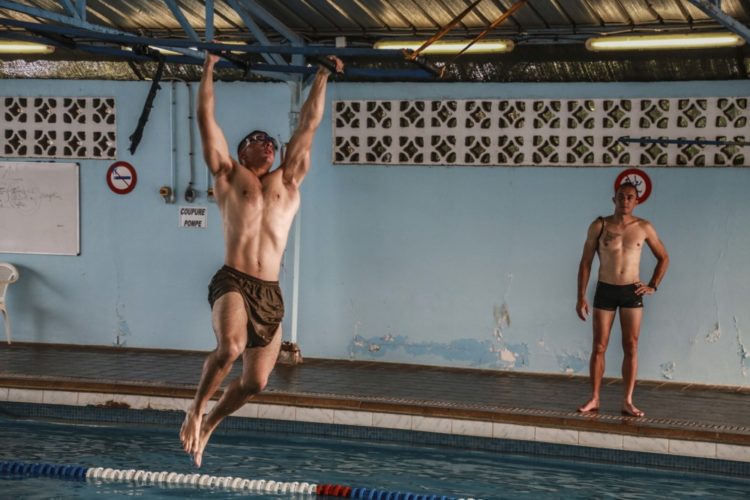Special Operations units are famous for their arduous selection and assessment programs. All four service components of the U.S. Special Operations Command (SOCOM) boast that they offer the toughest challenge to those aspiring to join their units’ elite ranks.
In an attempt to increase the success rate of its selection programs, SOCOM has released a report that breaks down the attrition levels in some of its units. Conspicuous in their absence are the Pararescue (PJ) and 160th Special Operations Aviation Regiment (SOAR) selections. Here are the programs analyzed:
- Basic Underwater Demolition/SEAL (BUD/S) training and Navy SEAL Qualification Training Course (SQT). The report considers both programs together rather than providing the attrition levels for each.
- Special Warfare Combatant-Craft Crewman (SWCC) Basic Crewman Selection and Qualification training.
- Ranger Assessment and Selection Program (RASP) 1 & 2. RASP 1 is for enlisted soldiers up to the rank of sergeant (E-5) and RASP 2 is for enlisted soldiers from the rank of staff sergeant (E-6) and upward, warrant officers, and officers.
- Special Forces Assessment and Selection (SFAS) and Special Forces Qualification Course (SFQC).
- Assessment and Selection (A&S) and Individual Training Course (ITC), respectively, the selection and qualification training to become a Marine Raider.
- Special Tactics Officer (STO) Assessment and Selection and Special Tactics Officer Qualification Course, respectively, the selection and qualification training for officers in the Air Force Special Operations Command’s career fields.
- Combat Control (CCT) Selection and Combat Control Qualification Course.
- Special Operations Weather Technician (SOWT) Selection and Qualification Courses.
The results favor the Air Force’s STO pipeline, with Naval Special Warfare Command’s (NSWC) programs coming in a close second. It should be noted that the year ranges aren’t the same. For example, for the SEAL pipeline, the report includes numbers from 2007 to 2017 but for the Special Forces pipeline, it has data from 2012 to 2017. Here are the attrition rates:
- AFSOC’s STO selection has a 79% attrition rate and the qualification course has a 17% attrition rate.
- The combined SEAL pipeline has a 73% attrition rate and the SWCC pipeline has a 65% attrition rate.
- RASP 1 has a 53% attrition rate. RASP 2 has a 74% attrition rate.
- SFAS has 64% and 51% attrition rates for enlisted soldiers and officers respectively, whereas SFQC has 35% and 27% attrition rates for the same categories.
- CCT selection has a 50% attrition rate with a further 27% rate for the Qualification Course.
- SOWT selection has a 54% attrition rate and a 40% attrition rate in the Qualification Course.
- MARSOC’s A&S has a 46% attrition rate and the ITC has a 28% attrition rate.
The report constantly emphasizes the need for transparent standards when it comes to female candidates. It proposes a four-stage approach to ensure more and better candidates:
LOE 1: ACCESSION – Work closely with the Services to recruit best-qualified candidates.
LOE 2: TALENT MANAGEMENT – Work closely with Service assignment and personnel systems to assign SOF personnel for operational requirements and individual success. Frequent, long-term monitoring and review required.
LOE 3: COMMUNICATE – SOF leaders brief implementation plans to training staff and operational force. Components establish Public Affairs postures and plans in cooperation with parent Service and USSOCOM.
LOE 4: ASSESSMENT – Components coordinate with Service research organizations to collect, organize, and report data needed for Longitudinal Implementation Plan Assessment. Identify effective practices, areas of concerns, and potential adjustments.”
Although selection is a physically draining effort, it is the mental aspect that makes it so hard. It matters not if one could bench press 450 pounds or run a mile in five minutes, if he or she doesn’t have the mental capacity to endure tough physical conditions for days on end. In the end, a strong mind will prevail over a strong body any day.
Already have an account? Sign In
Two ways to continue to read this article.
Subscribe
$1.99
every 4 weeks
- Unlimited access to all articles
- Support independent journalism
- Ad-free reading experience
Subscribe Now
Recurring Monthly. Cancel Anytime.









